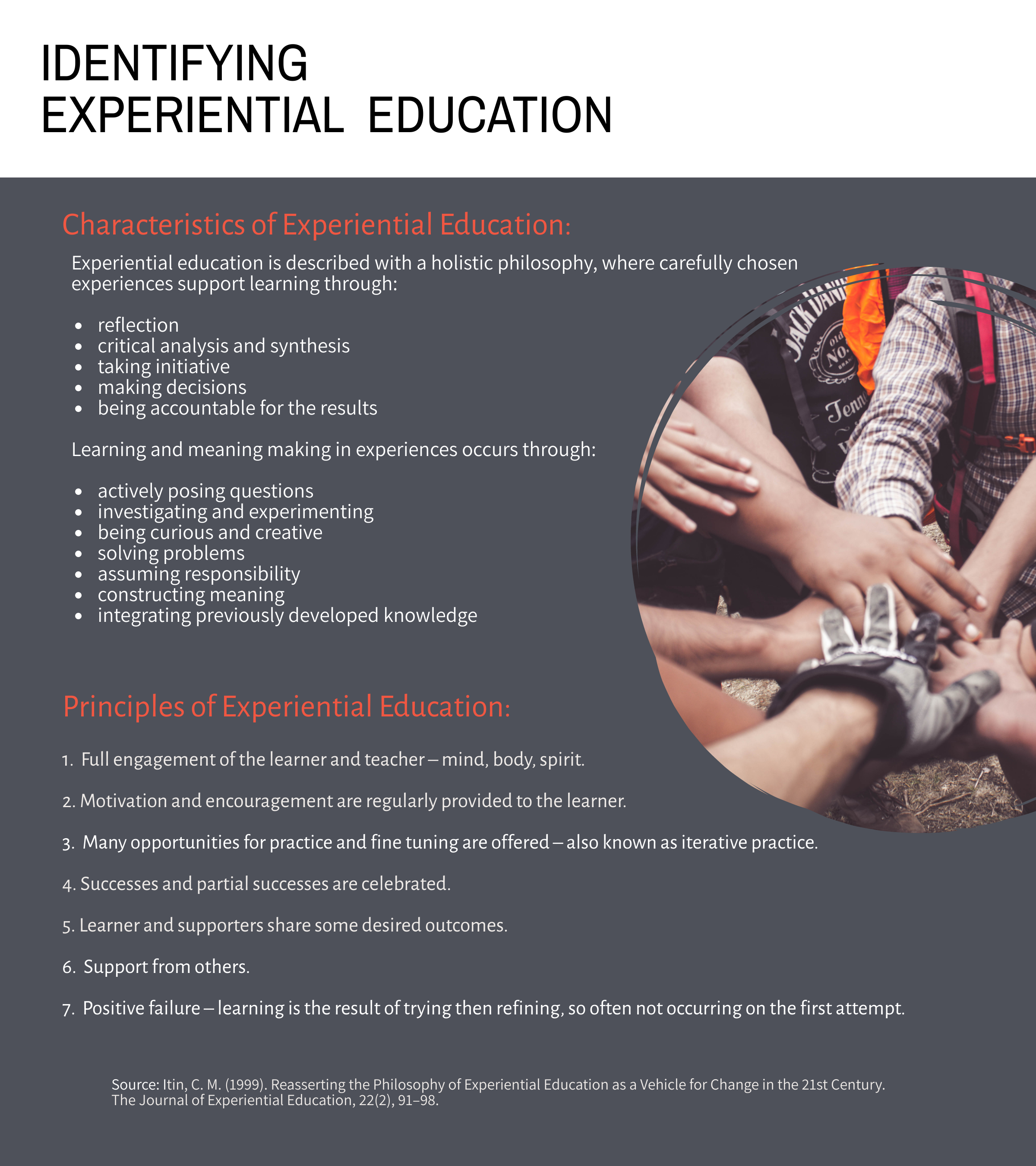What is WIL?
Work-Integrated Learning (WIL) programs are a type, or subset, of Experiential Education (EE) that focus on learning through doing, in this case using workplace-based challenges and settings. As a process, experiential education is a philosophical approach that can be taken towards the development of learning that have experience at their core and through which intentional learning outcomes are supported, monitored, and assessed. The infographic below provides an overview of the characteristics of experiential education. Have a look and think about how your WIL program reflects the EE principles noted.

Identifying Experiential Education transcript.docx
|
|
WIL Practitioners who are interested in further exploring the foundations of experiential education and historical perspectives may delve a little deeper into this supporting literature: Itin, C. M. (1999). Reasserting the Philosophy of Experiential Education as a Vehicle for Change in the 21st Century. The Journal of Experiential Education, 22(2), 91–98. |
WIL: A Particular Type of Experiential Education
The current definition of WIL as approved by CEWIL, the national association for Co-operative Education and Work-Integrated Learning, is:
| Work-integrated learning (WIL) is a form of curricular experiential education that formally integrates a student’s academic studies with quality experiences within a workplace or practice setting. WIL experiences include an engaged partnership of at least: an academic institution, a host organization, and a student. WIL can occur at the course or program level and includes the development of student learning objectives and outcomes related to: employability, agency, knowledge and skill mobility and life-long learning. |
All WIL programs fall under the larger umbrella of experiential education. It is the work contexts, experiences, and learning activities supported through the partnerships between the students, workplaces/host organizations, and institutions that define WIL as a particular brand of EE, one that ensures that the experiences contribute to academic as well as personal and professional outcomes.
The CEWIL definitions of WIL help guide Canadian institutions wishing to develop new WIL programs or refresh their current programs in ways that are recognized by national funding and accreditation organizations. To get a sense of the breadth of WIL in the Canadian context, click here for an overview of the 9 types of WIL as identified by CEWIL.
 |
To review more resources about the WIL types, see: Work Integrated Learning (cewilcanada.ca) CEWIL Resource Hub: Types of WIL | Work-Learn Institute | University of Waterloo (uwaterloo.ca) See the Practical Guide for Work-Integrated Learning The many ways of describing and categorizing the various types of WIL:
|
Watch the video below to gain more insight about the types of WIL:
What remains constant across the types of WIL as identified by CEWIL is the importance of quality. Quality in WIL programs means that there are shared attributes that serve to optimize the unique outcomes afforded by learning in authentic workplaces and using authentic workplace challenges. You will explore this in more depth in an upcoming next section.
The Importance of Integration
Key to all these types is that WIL provides opportunities for the learning of both theory and practice and goes beyond simply a chance for students to "apply theory learned in the academic context to the workplace." New knowledge and skills developed in the workplace setting must also be integrated back into the classroom for the learning potential of the model to be fully realized. WIL programs that offer iterative opportunities for alternating school and work terms, or programs that offer multiple types of WIL opportunities throughout the academic programs, provide important opportunities for students to practice transferring what they know and can do across contexts.
This is an important design element that helps ensure the "I" of WIL (integration) is realized for the students through activities that prompt them to make connections between the two learning environments. The integration may occur though return to campus presentations, debriefings, work reports, reflective journals, updating the resume, etc. This is critical to helping students understand and bridge their often reported "employability gaps."
|
Good design principles of WIL programs include:
|
